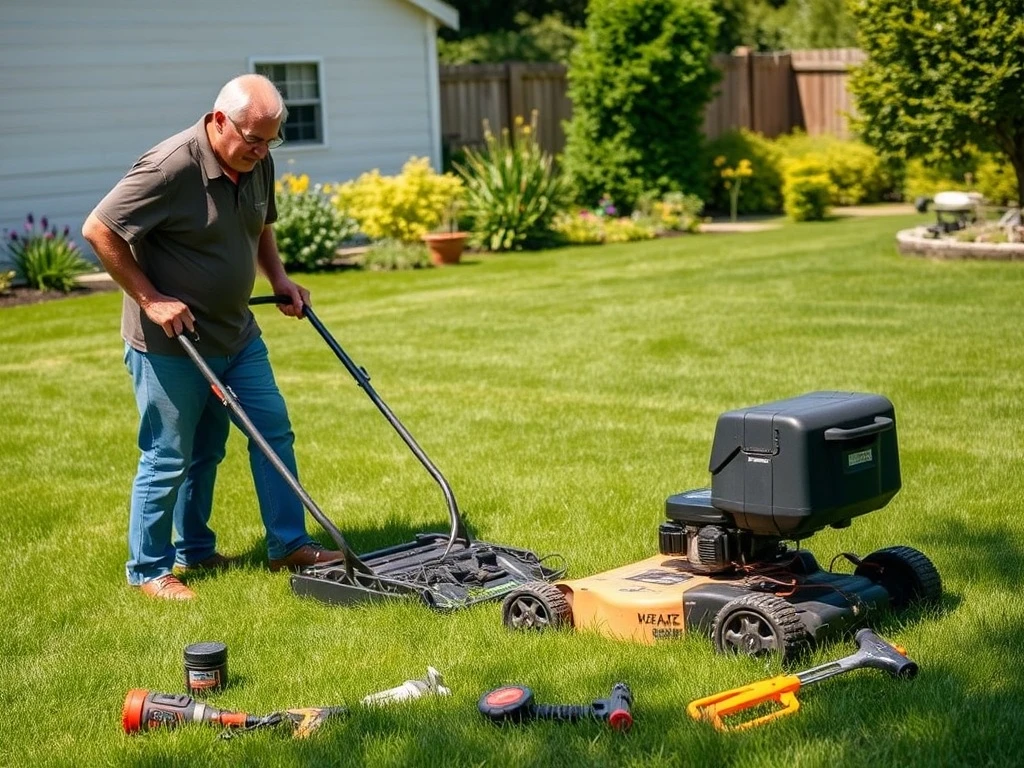Is your lawnmower turning over but refusing to start? This common frustration affects countless homeowners each season. When your lawnmower starts then dies, it signals underlying mechanical issues requiring immediate attention. Understanding these problems helps you quickly restore your equipment’s functionality.
Spark Plug Issues: The Primary Culprit
Faulty spark plugs frequently cause starting failures. Consequently, you should inspect this component first. Use a spark plug tester for accurate diagnosis. Alternatively, perform visual inspection during cranking. Look for visible spark generation. Clean or replace damaged plugs immediately. Additionally, check the ignition coil for proper function. Remember, spark problems prevent combustion entirely.
Fuel System Complications
Fuel delivery problems often make your lawnmower starts then dies. Therefore, examine these key components systematically:
- Fuel quality – Use fresh gasoline without ethanol contamination
- Fuel lines – Check for cracks, blockages, or disconnections
- Fuel filter – Replace if dirty or clogged
- Carburetor – Clean thoroughly using appropriate solutions
After addressing these areas, attempt restarting your equipment.
Air Filter Obstructions
Insufficient airflow prevents proper engine operation. Thus, inspect the air filter regularly. Remove and examine for dirt accumulation. Clean reusable filters carefully. Replace disposable filters when necessary. Adequate air supply ensures optimal fuel combustion. Moreover, proper maintenance extends equipment lifespan significantly.
Electrical System Failures
Faulty wiring or switches can interrupt ignition sequences. Check safety switches and kill wires thoroughly. Test ignition modules using multimeters. Replace damaged components promptly. Electrical issues often mimic fuel system problems. Therefore, comprehensive testing proves essential.
Read Also: Unbeatable Deal: Walmart’s Bestselling Outdoor Shed Slashed to Just $119!
Compression Problems
Low compression prevents engine firing despite cranking. Test compression using appropriate gauges. Values should meet manufacturer specifications. Worn piston rings or valves cause compression loss. Professional repair might become necessary here.
Carburetor Adjustments
Incorrect carburetor settings affect fuel-air mixture ratios. Adjust idle and mixture screws according to manual guidelines. Clean jets and passages using compressed air. Proper adjustment ensures smooth engine operation.
When to Consider Replacement
Sometimes, repair costs exceed replacement value. Older units with repeated failures might warrant retirement. Modern robotic mowers offer automated convenience. They operate independently once programmed. Consequently, they save time and effort effectively.
Conclusion
Diagnosing why your lawnmower starts then dies requires methodical troubleshooting. Begin with spark plugs and fuel systems. Progress to air filters and electrical components. Finally, assess overall equipment condition. Regular maintenance prevents most starting issues. However, aging equipment might need replacement eventually.
Frequently Asked Questions
Why does my lawnmower start briefly then stop?
This typically indicates fuel delivery issues, spark problems, or air restriction. Check these systems sequentially.
How often should I replace my spark plug?
Replace spark plugs annually or every 25 operating hours. Regular replacement ensures reliable ignition.
Can bad gasoline cause starting problems?
Yes, stale or contaminated fuel prevents proper combustion. Always use fresh gasoline from reputable sources.
What indicates a clogged air filter?
Difficulty starting, reduced power, and black smoke suggest air filter issues. Visual inspection confirms clogging.
When should I seek professional repair?
Seek help when basic troubleshooting fails or compression tests reveal internal engine damage.
Are robotic mowers reliable alternatives?
Modern robotic mowers offer excellent reliability and convenience for regular lawn maintenance without manual operation.






